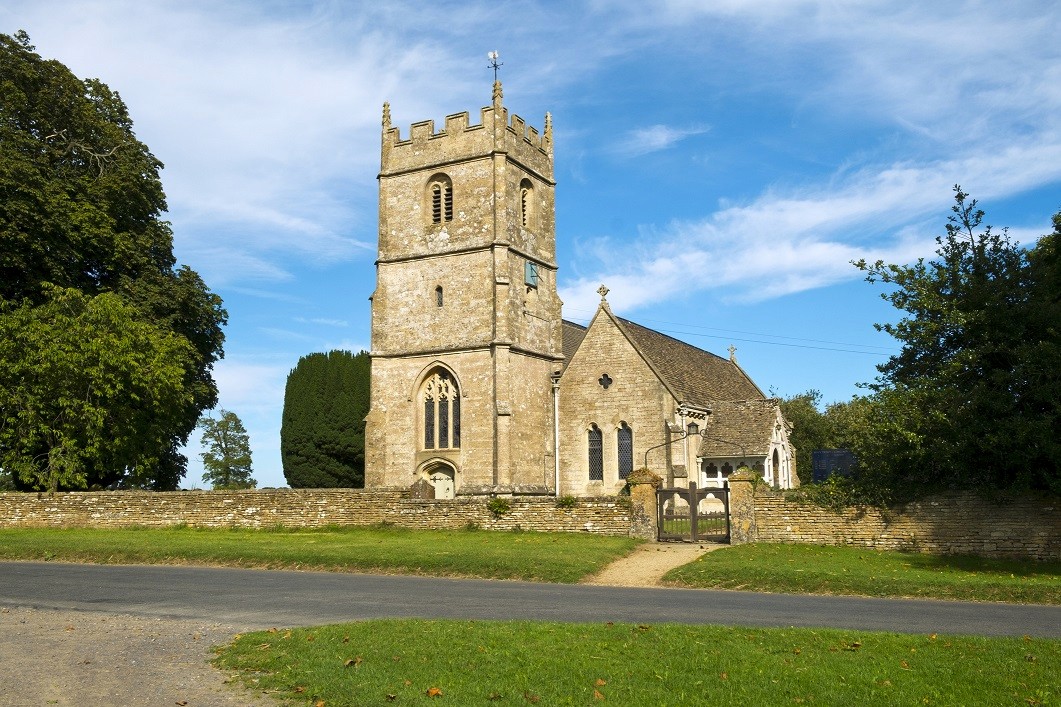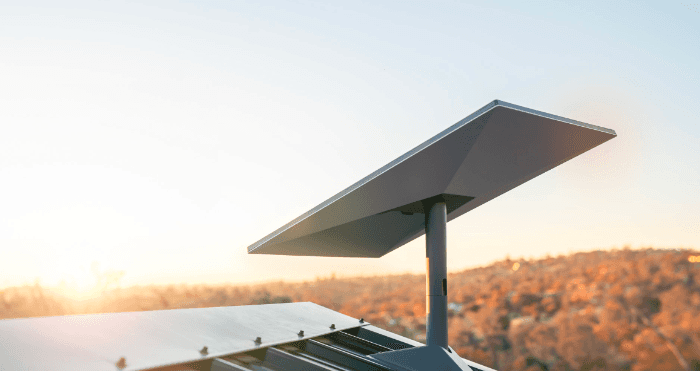23 Nov 2024
Internet and Wi-Fi Solutions for Churches and Listed Buildings
Installing Internet and Wi-Fi solutions in churches and listed buildings comes with unique challenges. These properties, often rich in history and architectural significance, require careful planning to balance modern connectivity needs with preservation regulations. From thick stone walls to restrictions on structural alterations, finding the right solution demands a tailored approach.
This article explores common obstacles in installing internet in churches and listed properties, highlights practical solutions, and explains why a professional survey is often essential.
Why Don’t Churches Have Wi-Fi?
Churches are a prime example of buildings where traditional internet installations can be particularly difficult. Their historical significance and unique architecture often pose several challenges:
- Thick Walls: Many churches are built with dense stone or brick, which can block or weaken Wi-Fi signals.
- Limited Infrastructure: Network cabling and power outlets are often minimal or nonexistent in older buildings.
- Conservation Restrictions: Fixing hardware to walls or altering the structure is typically prohibited due to strict preservation regulations.
- Challenging Grounds: Digging to install fibre cables is often impossible, especially around consecrated land.
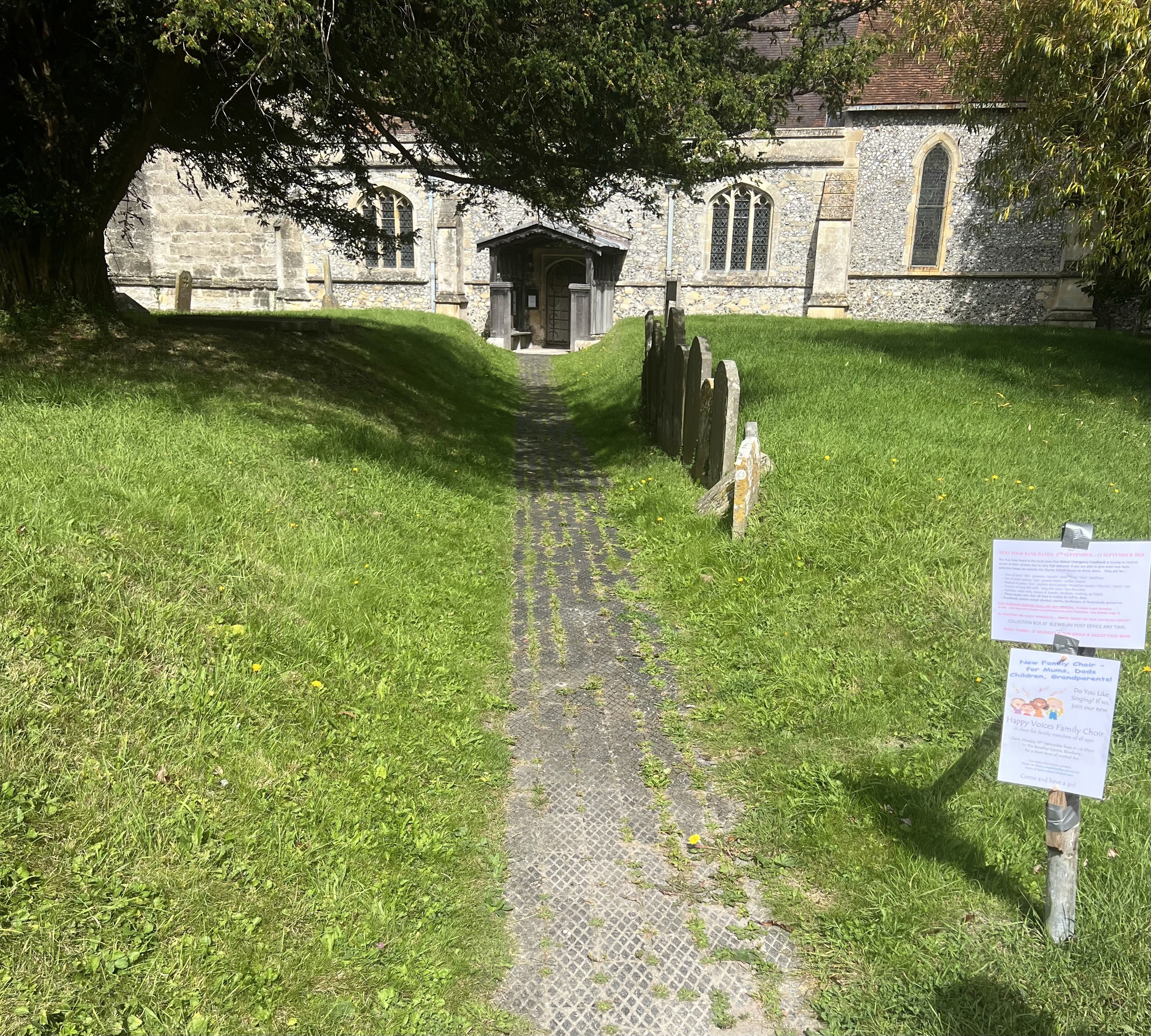
These issues mirror the challenges faced by listed residential properties and homes in conservation areas. Understanding the solutions for churches can help identify what might work best for your property.
Overcoming Wi-Fi Challenges in Churches
1. Non-Penetrating Roof Mounts
For churches with towers or high points, non-penetrating roof mounts (NPRMs) offer an effective, conservation-friendly way to install hardware. These mounts avoid drilling or altering the building, making them ideal for sensitive structures.
These kind of installation have the flexibility to support larger installs and are commonly used when we install internet connectivity solutions at festivals.
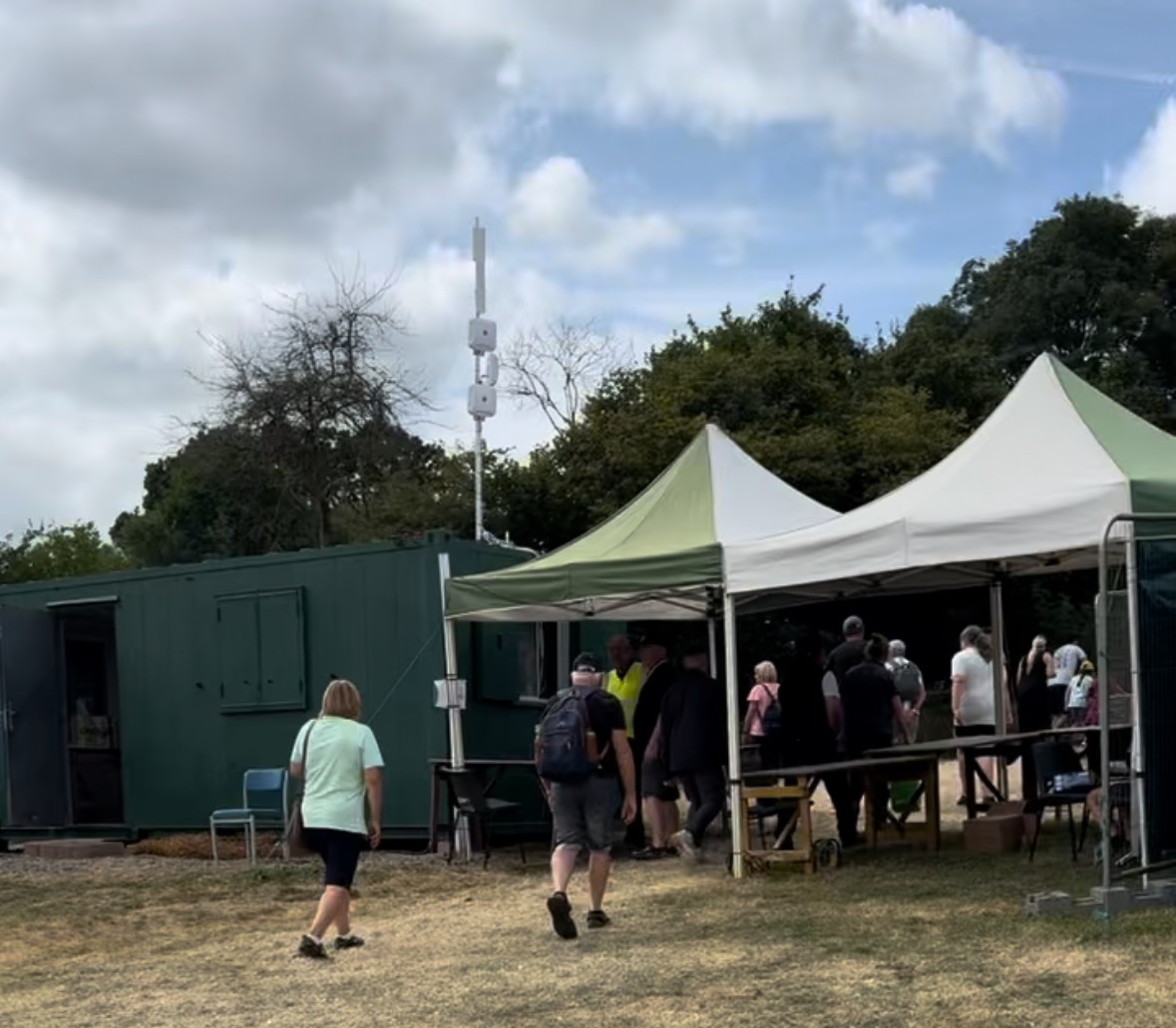
With a clear line of sight to local cell towers or satellites, these mounts can support:
- 4G/5G SD-WAN connectivity for reliable broadband access.
- Satellite internet solutions like Starlink, particularly for remote locations.
2. Using Existing Infrastructure
Many churches have pre-existing cable routes that were originally installed for other purposes, such as powering Christmas decorations or CCTV systems. These routes can be repurposed for network cabling, minimising disruption and avoiding the need for additional modifications.
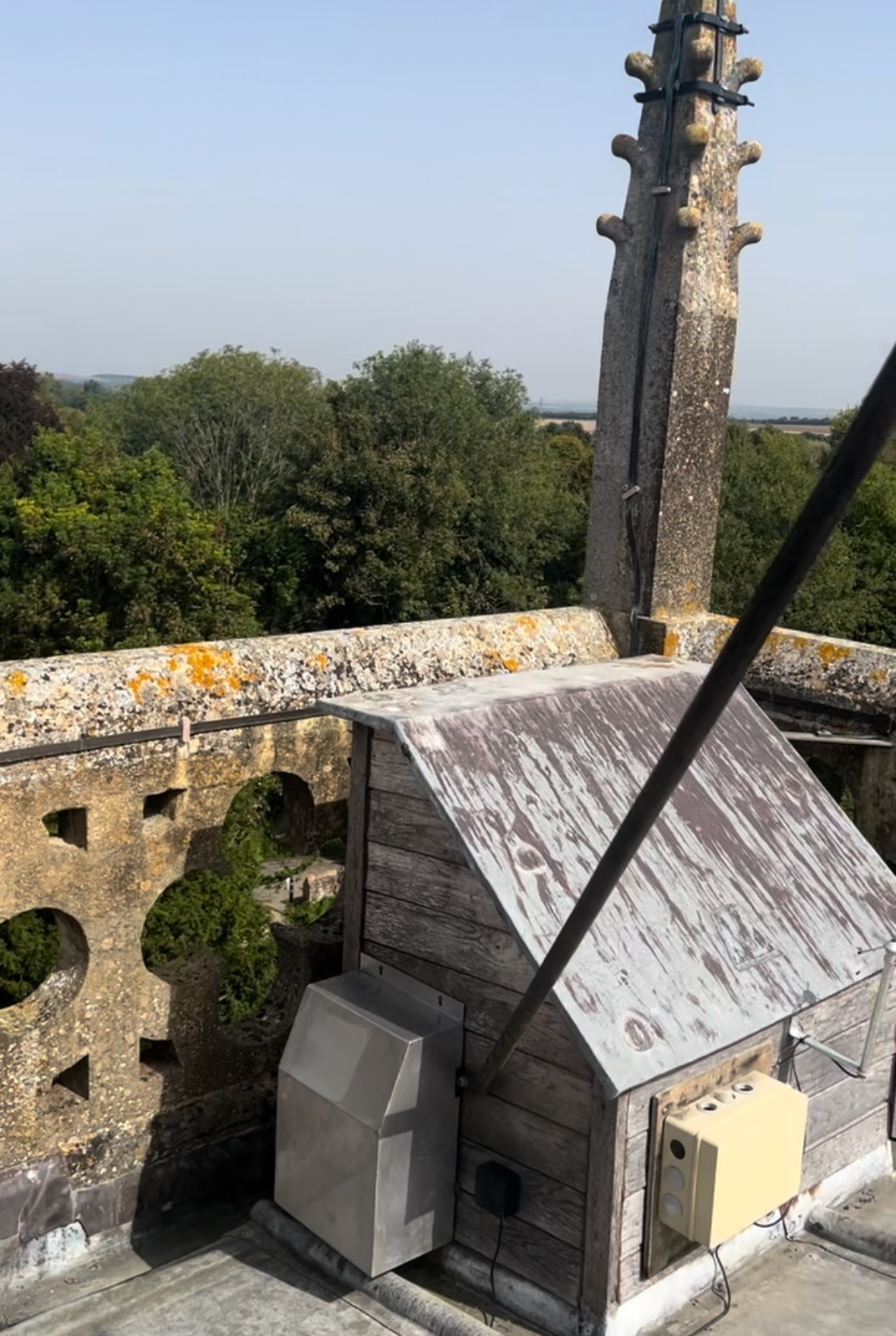
3. Radio Links to Nearby Buildings
If direct installation on the church isn’t possible, nearby buildings such as parish halls or vicarages can serve as connectivity hubs. Internet hardware can be installed in these locations and linked back to the church via a point-to-point (P2P) wireless connection. This method keeps hardware installations on the church itself to a minimum, often requiring nothing more than a small receiver device.
Delivering connectivity this way also enables both buildings to utilise the same internet connection. This approach not only extends coverage but can also reduce monthly service costs, provided the available bandwidth is sufficient for shared usage. It’s a practical solution for organisations looking to optimise their budgets without compromising on performance.
Safe and Secure Church Wi-Fi Networks
When implementing Wi-Fi in churches, there are additional considerations beyond connectivity, such as ensuring network safety and security:
- Safe Installation: Non-invasive methods like NPRMs or P2P links ensure compliance with conservation rules.
- Network Security: Firewalls, encryption, and safe browsing filters protect users and sensitive systems.
- Accessibility and Control: Public Wi-Fi networks in churches can be configured to allow limited, monitored access while maintaining security for private networks.
From Churches to Listed Homes: Applying the Same Solutions
The challenges of installing Wi-Fi in churches are not unique. Listed residential properties often face similar issues, such as:
- Thick walls blocking signals.
- Restrictions on visible or structural modifications.
- The need for tailored, non-invasive solutions.
By applying the same principles used in churches—such as non-invasive mounts, structured cabling, or radio linking—listed homes can achieve reliable, high-speed internet without compromising their heritage status.
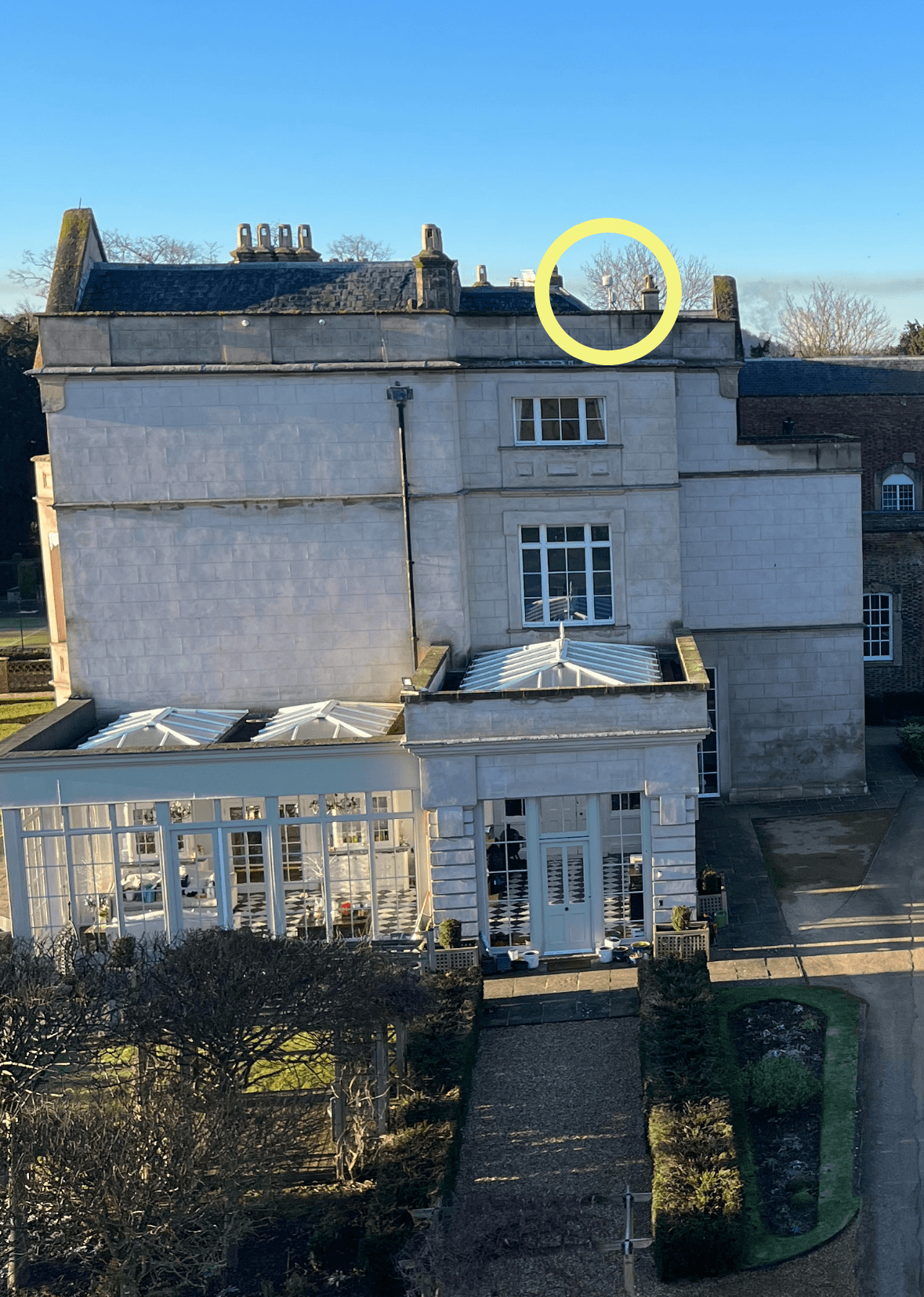
Wi-Fi Solutions for Listed Properties
Listed properties, like churches, often amplify connectivity challenges due to their size and structural complexity.
However, they also offer unique opportunities:
- For Churches: Once a connection is established, the majority of the space tends to be open. This makes mesh technology an effective option for amplifying signals without the need for structured cabling, significantly reducing installation costs.
This allows for streaming events, donations by card , and seamless public Wi-Fi access.
- For Listed Homes: Unlike churches, listed homes typically have many thick internal walls, which can drastically reduce mesh network performance. In such cases, a mix of structured cabling and mesh technology may be required.
A physical survey is often essential for understanding how to establish a strong network in complex environments like these.
Why a Professional Internet Connectivity and WiFi Survey is Essential
Each property is unique, and a professional Internet Connectivity and Wi-Fi survey helps to:
- Identify Coverage Issues: Locate dead zones, interference, and other connectivity challenges.
- Recommend Tailored Solutions: Determine the best connectivity options, whether that’s 4G/5G SDWAN, a Starlink Installation, or a plan for structured cabling and mesh WiFi.
- Ensure Compliance: Work within conservation regulations to protect the building’s integrity.
- Save Time and Resources: Avoid trial-and-error solutions by designing a network that works correctly from the start.
What Churches Teach Us About Large Listed Properties Church Wi-Fi installations often highlight the broader challenges of working in large listed properties, from network design to non-invasive installation methods. Once reliable connectivity is achieved, it opens up opportunities for additional upgrades:
- Mesh Wi-Fi Networks: Extend coverage throughout the building.
- CCTV Systems: Add security enhancements with reliable internet connections.
- Smart Home Integration: Enable modern features like automated lighting, heating, and security systems.
For listed residential properties, a network upgrade is also an opportunity to future-proof the home and integrate these advanced systems.
Conclusion: Innovative Solutions for Complex Properties
Churches and listed buildings require a careful balance of modern technology and heritage preservation.
By using innovative methods like NPRMs, structured cabling, and P2P links, it’s possible to deliver high-speed, reliable Wi-Fi while respecting the unique requirements of these properties.
Whether it’s a historic church or a listed home, taking the time to plan and implement the right solution can make all the difference. A professional survey ensures the best approach for your property, giving you confidence in a seamless, modern connection without compromise.
